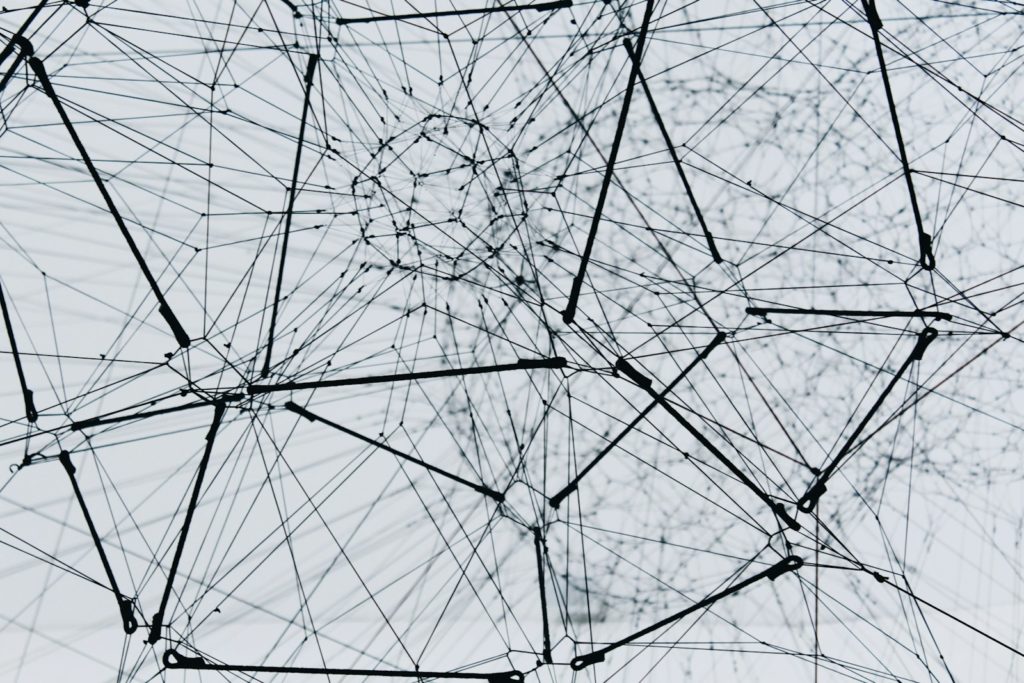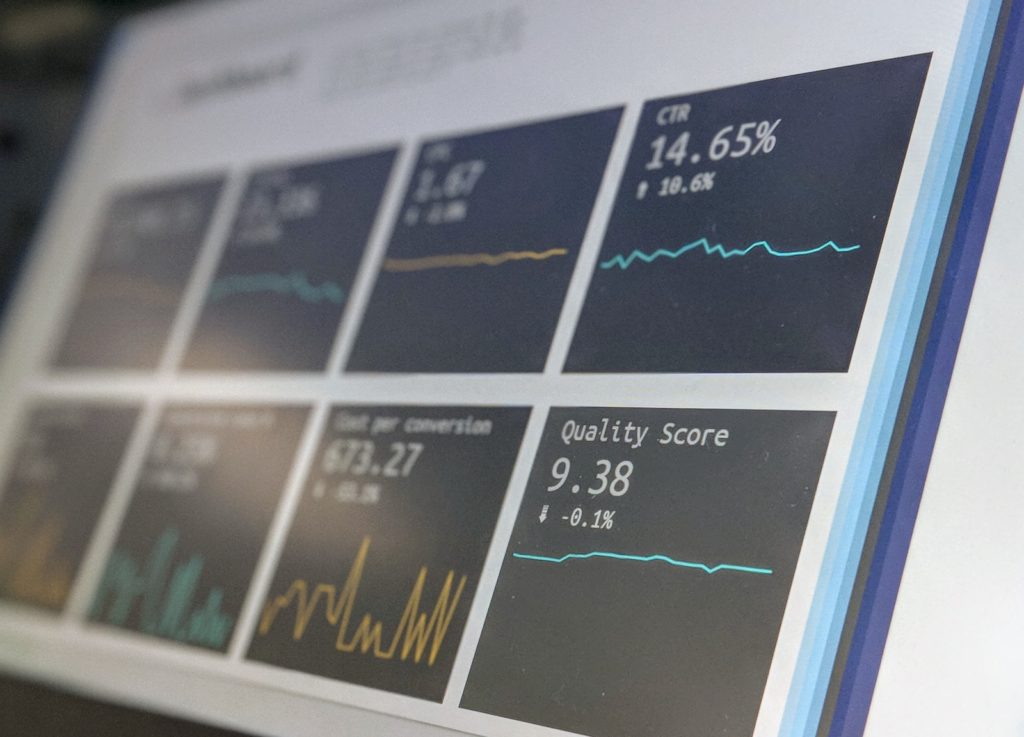What is Web3? How is it different from the web that we use?
The web has come a long way since its inception. From Web 1.0, which was a static and read-only platform, to current Web 2.0, which introduced user-generated content and interactive applications. We are now anticipating a new evolved web – Web3. Web3 promises to revolutionize the way we interact with the internet. In this blog post, we will explore the key differences between the web we currently use and the advanced Web3.
Web3: Definition and Features

Web3 is a collective term used for a variety of technologies and concepts. It aims to create a more decentralized and user-centric internet experience. Unlike the current web, Web3 leverages technologies like:
- Blockchain
- Decentralized storage
- Smart contracts and more
to empower users and provide them with more control over their data and online interactions. These modern technologies function collectively to provide users with a new distributed network. Unlike the current iteration of the web, Web3 is designed to prioritize user autonomy and privacy.
Decentralization and Blockchain
One of the fundamental differences between Web3 and the current web is the emphasis on decentralization. In Web3, applications and services are built on top of networks, such as blockchain, where data is distributed across the network. This decentralized nature ensures transparency, immutability, and security, as data is verified and stored across multiple nodes in the network.
Key takeaways:
- All transactions and data exchanges in a decentralized network are recorded on a public ledger that anyone within the network can view.
- Secondly, decentralization ensures immutability, meaning that once data has been added to the blockchain, it cannot be changed or deleted. This feature is critical in establishing trust among users.
- Lastly, it provides robust security. Unlike traditional databases, where a single breach can compromise all data. The data in a decentralized network is verified and distributed across a network of nodes (computers) that participate in the validation and storage of transactions. This means that even if a single node is compromised, the integrity of the overall network remains intact.
The strength of a decentralized network lies in its distribution. When data is stored across multiple nodes, each containing a copy of the entire ledger, it creates resilience. Thus, even if a single node is compromised or malfunctions, it doesn’t compromise the integrity of the entire network. Other nodes retain copies of the ledger, and the consensus mechanism prevents any single node from altering the network’s shared ledger.
Web3 vs Web 3.0: Both are different
Web3 and Web 3.0 are often used interchangeably but refer to different concepts:
- Web3: This term generally represents a decentralized version of the internet enabled by blockchain technology. It aims to create a more transparent, secure, and user-centric online environment. Web3 encompasses decentralized applications (dApps), non-fungible tokens (NFTs), and other blockchain-based innovations.
- Web 3.0: This term refers to the next phase or evolution of the internet, emphasizing a semantic web. It envisions a more interconnected and intelligent internet where data is better interpreted by machines, allowing for more contextual understanding and smarter interactions between users and devices. Web 3.0 aims to create a more intuitive and personalized online experience by integrating Artificial Intelligence (AI), Machine Learning (ML), and Natural Language Processing (NLP) into web applications.
Although different, both Web3 and Web 3.0 aim to enhance the web experience for users. Web3’s decentralized infrastructure could provide a secure platform for Web applications, and Web 3.0 could enhance the user experience through semantic search engines, and intelligent assistants.
Understanding Blockchain
Blockchain, a key technology in Web3, is a distributed ledger that records transactions across a network of computers rather than in a single location. This distribution enhances transparency as anyone on the network can view or audit the transactions. It eliminates the need for intermediaries and ensures data integrity.
Each transaction in a blockchain is recorded as a ‘block’ and linked to the ones (transactions) before and after it, creating a chain of transactions – hence the name ‘blockchain’. This linkage is highly secure and nearly immune to tampering. This is because each block of data on the blockchain is linked to the previous one using cryptography. Altering even a single block requires recomputing the hash of all subsequent blocks, alerting the entire network to the manipulation. Thus, if someone tries to alter a transaction, it would affect the entire chain, making fraud easily detectable.
Blockchain technology has the potential to revolutionize various industries, including finance, supply chain management (SCM), and more. For example,
- The decentralized and immutable ledger system of blockchain provides transparency and security in financial transactions, resulting in lower costs and increased efficiency.
- The application of blockchain in supply chain management ensures transparency and traceability. Each step in the supply chain, from production to delivery, can be recorded and verified on the blockchain. This creates an immutable record of the product’s route, enhancing transparency and trust.
User Control and Data Ownership

Another significant difference in Web3 is the shift towards user and data control. Web3 aims to enable users to have more control over their data.
With Web3, users can store their data in storage systems, such as IPFS (InterPlanetary File System). These systems enable users to store their data across a network of distributed nodes instead of centralized servers. This approach revolutionizes how individuals manage their digital data, granting them greater control over their data. Consequently, it fosters an online environment that prioritizes user-centricity and empowers individuals.
How do systems like IPFS work?
IPFS operates on a peer-to-peer (P2P) protocol, wherein files are stored and accessed based on content addressing (based on the content itself) rather than location addressing (based on file paths or memory addresses) used in traditional web systems. Each file is assigned a unique cryptographic hash, acting as its identifier. When a user uploads a file to IPFS, the system breaks it into smaller chunks, encrypts each chunk, and then distributes these encrypted chunks across multiple nodes in the network. This distributed approach ensures fault tolerance. When a user requests a file, the IPFS protocol retrieves and reassembles the file’s chunks from various nodes, reconstructing the original file for the user.
This decentralized storage and retrieval mechanism in IPFS contrasts with the centralized server-based storage of Web 2.0. In the traditional web, data is stored in centralized servers. Unlike Web 2.0, IPFS allows users to manage access, and ensure greater privacy and security by decentralizing data storage and access control.
This approach gives individuals more privacy and ownership over their digital identities, fostering a more user-centric online ecosystem.
Smart Contracts and Programmability
Web3 also introduces the concept of smart contracts, which are self-executing contracts with predefined rules and conditions. These contracts leverage blockchain technology and enable automated interactions between parties. Encoded in code and residing on the blockchain, these contracts are designed to execute when specific predefined conditions are met. The execution of smart contracts relies on the consensus mechanism of the blockchain network. Nodes within the network validate the transaction and its compliance with the smart contract rules before adding it to the blockchain, ensuring consensus and immutability. Once executed, the outcome of the smart contract actions is recorded and is visible to all participants in the network. This transparency ensures that the contract’s execution is evident and immutable. In general, smart contracts provide a secure and decentralized framework for digital transactions in web3.
Smart contracts can be used to facilitate financial agreements, supply chain management, and decentralized applications (dApps) in Web3. Further, the programmability of Web3 allows developers to build complex applications and services on top of decentralized platforms. This opens up new possibilities for innovation and collaboration.
You may like: How does the popularity of an internet post work? Decoding the Viral Phenomenon
Web3 vs. Web 2.0: Key Differences

Now that we have an overview of Web3, let’s explore the key differences between Web3 and the web we currently use, often referred to as Web 2.0.
Trust and Transparency
Web 2.0 relies on centralized servers to facilitate transactions and store data. Web3 leverages blockchain technology and smart contracts to provide trust and transparency through decentralized networks. The immutable nature of blockchain ensures that transactions and data cannot be tampered with, enhancing security and trust.
Interoperability and Portability
Web 2.0 applications are often isolated from each other, making it challenging to transfer data and integrate services seamlessly. Web3 aims to enable interoperability and portability through standardized protocols and open APIs (Application Programming Interfaces). This allows users to move their data and digital identities across different platforms and services without restrictions.
On a final note, Web3 represents a significant leap forward in the evolution of the internet. With its emphasis on decentralization and user control, Web3 has the potential to reshape the digital landscape. While it is still in its early stages, the concepts and technologies behind Web3 are gaining traction and attracting attention from both tech enthusiasts and industry leaders. As we move towards a more decentralized and user-centric internet experience, it is essential to consider the implications and possibilities that Web3 brings.
You’ve managed to cover everything I was curious about, perfect!
I came across this wonderful website recently, they deliver excellent content for viewers. The site owner knows how to provide value to the audience. I’m pleased and hope they continue their splendid service.
I have spent over three hours on the internet today but have yet to come across a single article as intriguing as yours. It is sufficient to satisfy my curiosity. In my opinion, the web would be considerably more useful than ever before if all website proprietors and bloggers produced high-quality content like yours.
Usually I do not read article on blogs however I would like to say that this writeup very compelled me to take a look at and do so Your writing taste has been amazed me Thanks quite nice post
Attractive section of content I just stumbled upon your blog and in accession capital to assert that I get actually enjoyed account your blog posts Anyway I will be subscribing to your augment and even I achievement you access consistently fast
Hello my loved one I want to say that this post is amazing great written and include almost all significant infos I would like to look extra posts like this
Hi my loved one I wish to say that this post is amazing nice written and include approximately all vital infos Id like to peer more posts like this
Its like you read my mind You appear to know a lot about this like you wrote the book in it or something I think that you could do with some pics to drive the message home a little bit but instead of that this is fantastic blog An excellent read I will certainly be back
Wow wonderful blog layout How long have you been blogging for you make blogging look easy The overall look of your site is great as well as the content